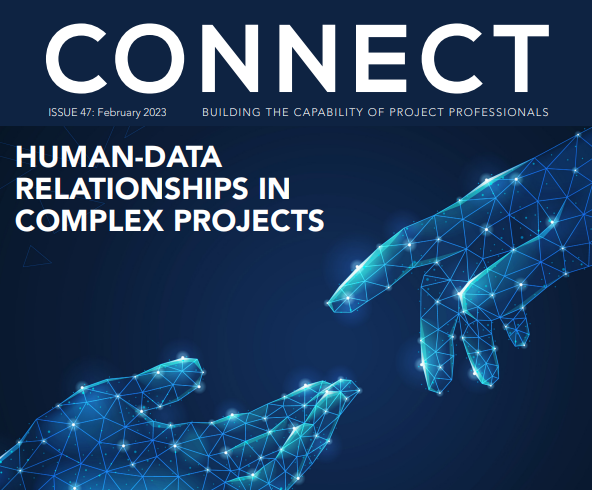
Cross-disciplinary Collaboration in Megaprojects: A Balancing Act
AI generated image of site meeting (midjourney)
With two decades of delivering projects across Africa and Europe, I have observed the monumental feats that can be achieved when experts subject their thinking caps to peer scrutiny for a common outcome. I have also seen when such partnerships cave to conflicting interests, resource roulette and unclear leadership structures.
Megaproject delivery is often predicated on the intricate dance of cross-disciplinary collaboration, weaving together diverse expertise, cultural nuances and organisational ethos. Yet, the path to realising this potential is not as linear as many would anticipate. It is littered with potential pitfalls. In this article, I shed light on three challenges and provide a beacon to navigate them.
- Cultural and Communication Barriers
Beyond the evident linguistic differences, every discipline brings to the table its nuanced lexicon. When integrated with the diverse nature of megaprojects, misunderstandings can proliferate.
A case in point is Gautrain, the first rapid rail transport system in Gauteng, South Africa. The project suffered a series of challenges during its development and construction phases, including miscommunications between the European engineers and local teams. Since the project was essentially a collaboration between international and local companies, integrating different working cultures and methods posed a challenge. For instance, Bombardier, a Canadian company, was responsible for supplying part of the rolling stock (96 Electrostar vehicles), while European and South African companies led other vital aspects of the project in the Bombela consortium comprising (Bombardier, Bouygues Travaux Publics, South African civil contractor Murray & Roberts and Strategic Partners Group).
As the project progressed, differences in communication styles, work methodologies, and expectations grew evident. This combination sometimes led to misunderstandings and miscommunications between the teams. Noteworthy is the fact that while miscommunication was a factor, the Gautrain project’s delays resulted from a confluence of issues, not solely based on cultural or communication differences. Upon completion, the project became a significant infrastructure achievement for South Africa, showcasing the potential benefits and challenges of multinational collaboration.
One solution to cultural and communication barriers is the introduction of a unified project lexicon. A project-specific glossary can serve as the Rosetta Stone, bridging jargon gaps. Also, periodic interdisciplinary workshops can foster understanding and mutual respect, both technically and culturally.
- Misaligned Objectives
When large-scale public and private collaboration is involved, the Galileo Satellite Navigation project exemplifies the complexities of individual objectives that do not align. The Galileo project was launched to provide Europe with its own independent high-precision positioning system, thus reducing dependence on the military-oriented American GPS and Russian GLONASS. This was not only for economic reasons but also for strategic and defense considerations.
Initially, the project was intended to be financed and operated as a Public-Private Partnership (PPP). Public funds would cover the development costs, with private companies investing in return for future concessions to operate the system and collect the associated revenues. However, challenges arose because public and private stakeholders had different goals and risk tolerances. Specifically, the European Union and European Space Agency (ESA) had strategic interests and were more tolerant of risks and delays. However, the private consortium focused more on investment returns and commercial viability. The private stakeholders were more sceptical about the project’s profitability due to competition from the freely accessible American GPS. Due to these challenges, in 2007, the EU changed the financing structure, shelving the idea of a PPP for the deployment and operational phases. Instead, the EU fully funded the system using the European Community budget, thus taking control away from the private consortium.
At the end of 2016, the Galileo system went live under public ownership. For conflicting objectives, I suggest shared vision workshops that prioritise alignment, ensuring every stakeholder begins with a unified understanding of project objectives. As projects progress, periodic reviews should ensure all stakeholders remain on the same page.
- Fragmented Leadership
Cross-disciplinary collaboration can lead to a cacophony of decision-making voices, stalling progress. A case in point is Germany’s Berliner Airport, a multiply-referenced case study for leadership dysfunction. The many stakeholders, each with agendas, led to a decision-making quandary. They include the federal government, the states of Berlin and Brandenburg and various regulatory agencies. These entities often had differing priorities and viewpoints.
Another challenge was the project’s governance structure which many analysts describe as overly complex. This contributed to unclear lines of responsibility and accountability. More so, the frequent leadership changes did not help. Over the years, the project saw multiple changes in its management and supervisory boards, leading to inconsistent decision-making over its nine-year delay.
While it might be an oversimplification to say the BER’s challenges were solely due to leadership dysfunction, the multitude of stakeholders and the lack of a streamlined decision-making process certainly played a significant role in the project’s difficulties. A unified command structure is vital for megaprojects to avoid such drawbacks. A clear hierarchy that integrates representatives from all key stakeholders can streamline decision-making. Also, periodic meetings to ensure alignment at the top can trickle down through the project.
In conclusion, the symphony of cross-disciplinary collaborations turns megaprojects into reality. Yet, this symphony needs precise members playing their parts in clear communication, unwavering alignment, resource clarity, decisive leadership and integrated risk management. Learning from past project pitfalls can pave the way for future successes, harmoniously merging the diverse strengths of unique disciplines and cultures.
#collaboration #ppp #megaprojects #infrastructure #complexity #communication
References
https://www.railway-technology.com/projects/gautrain/
https://www.esa.int/Applications/Satellite_navigation/Galileo/What_is_Galileo
https://www.euronews.com/2020/10/31/berlin-airport-opens-10-years-late-and-three-times-over-budget






